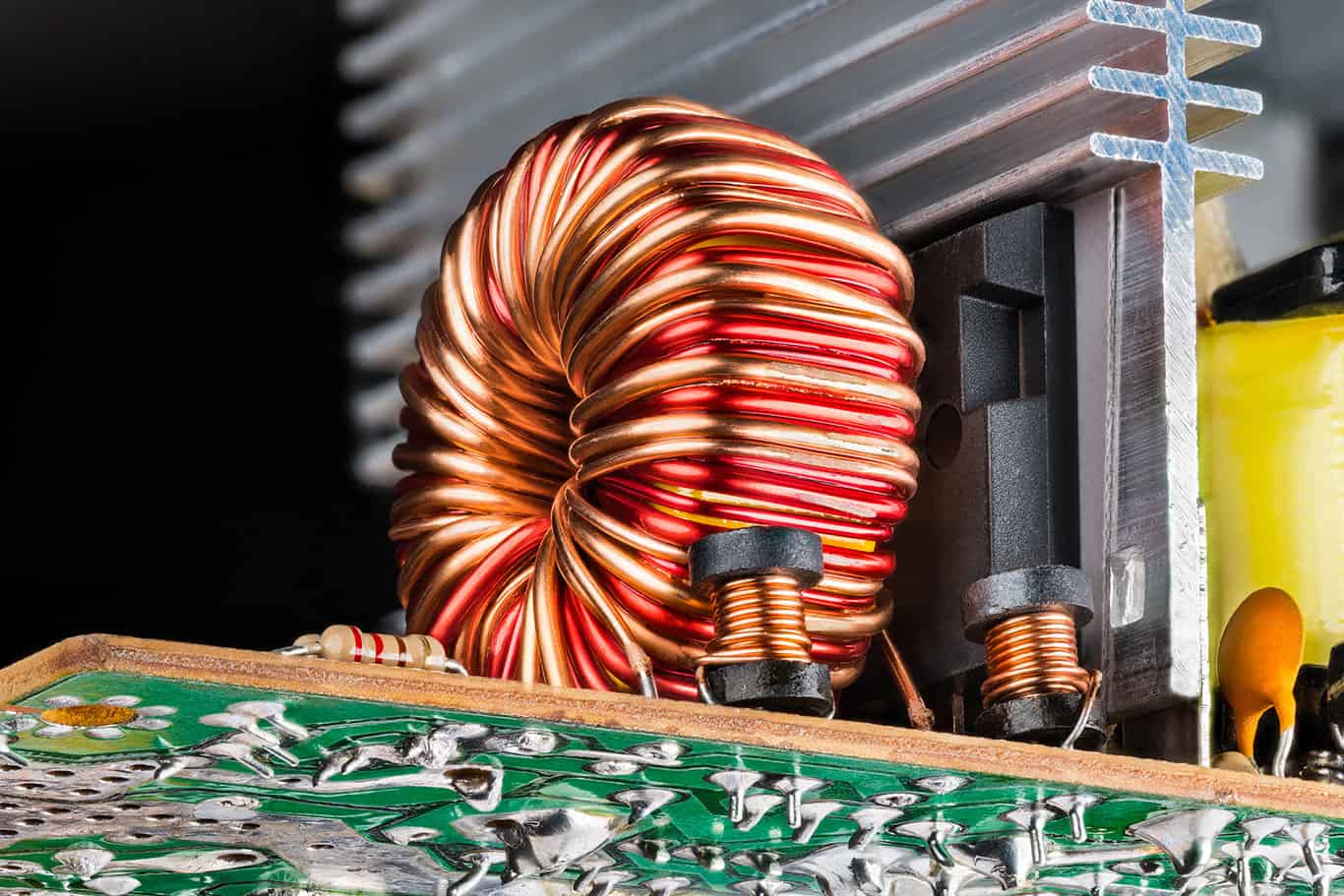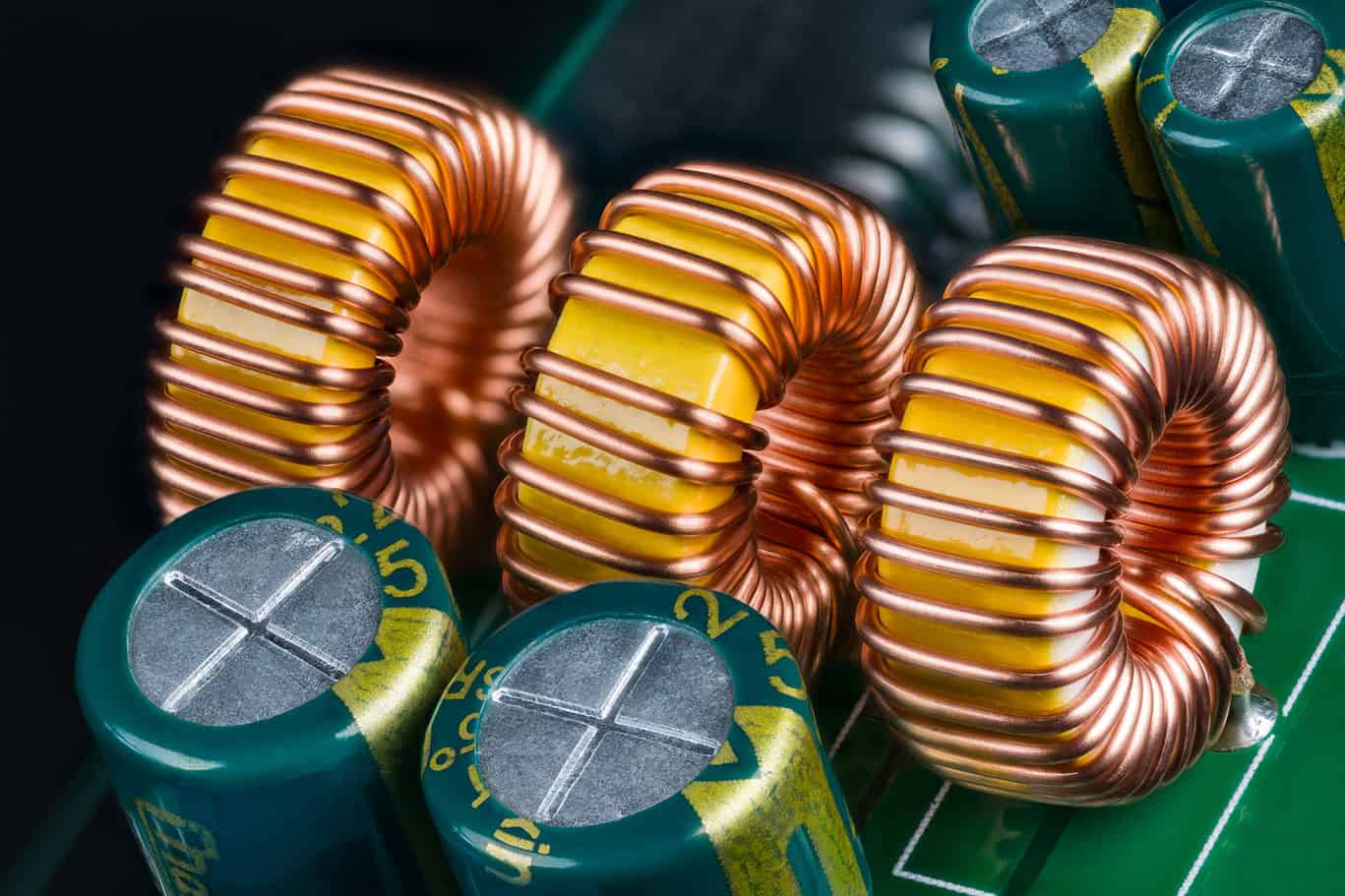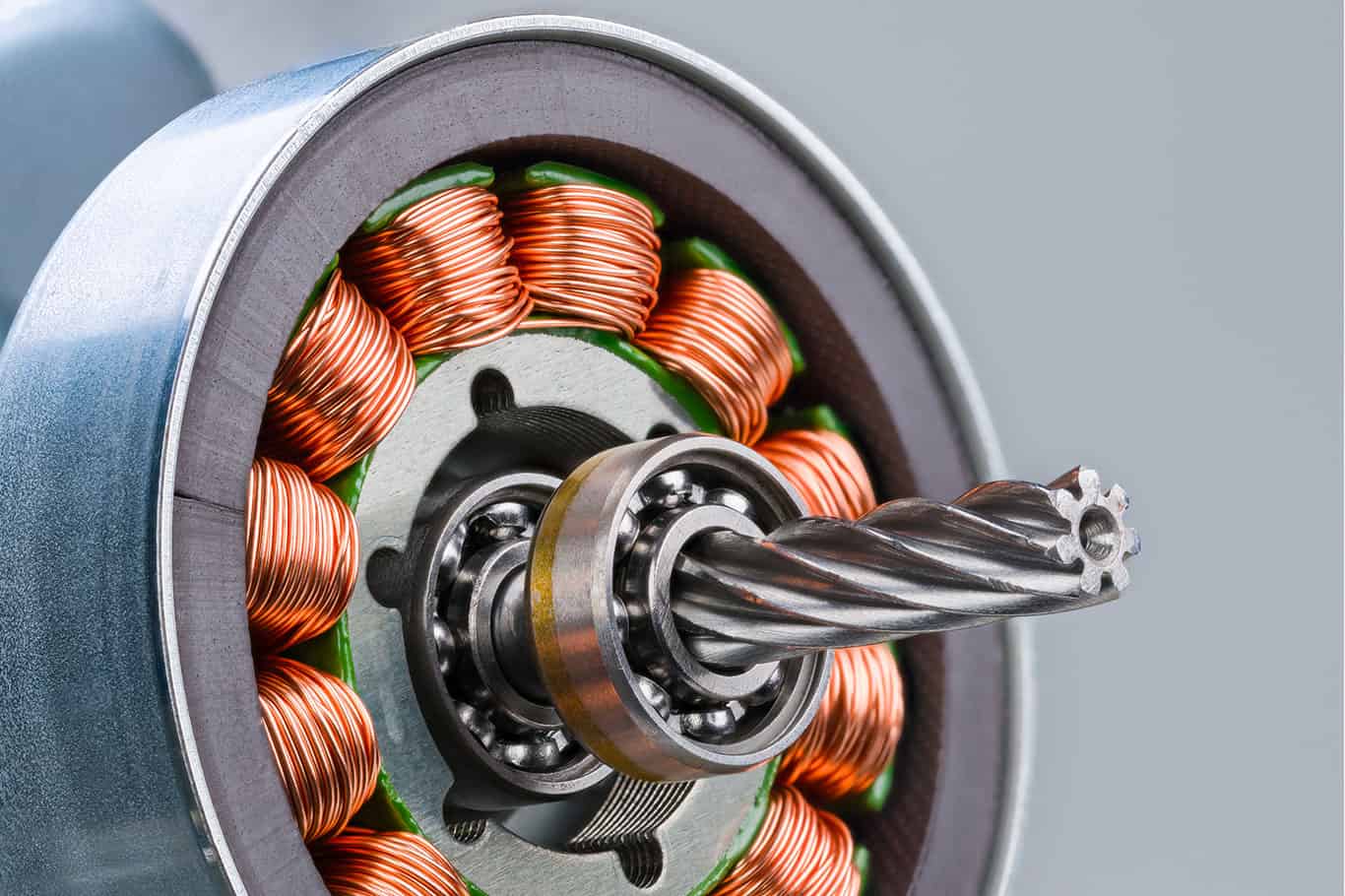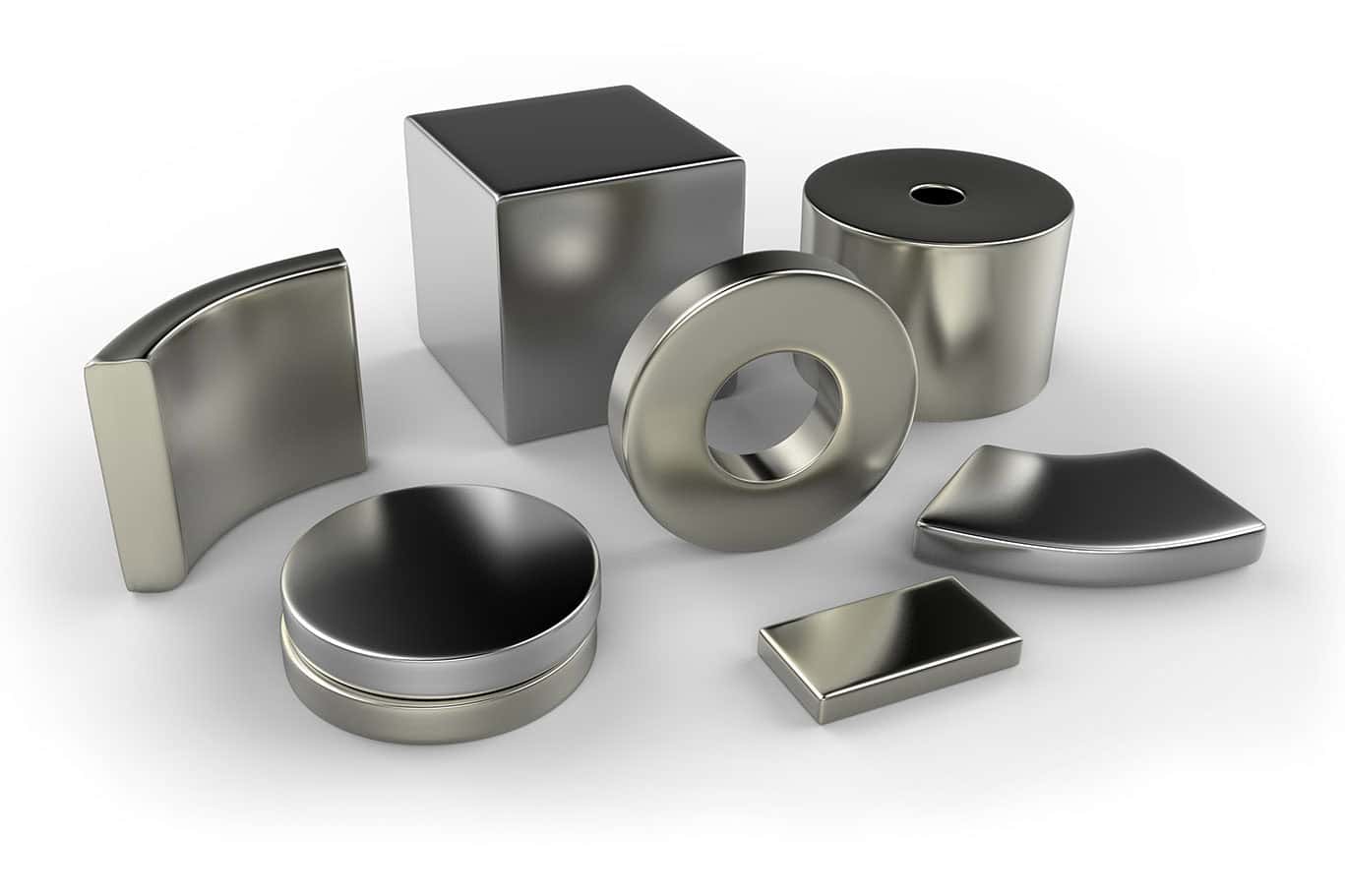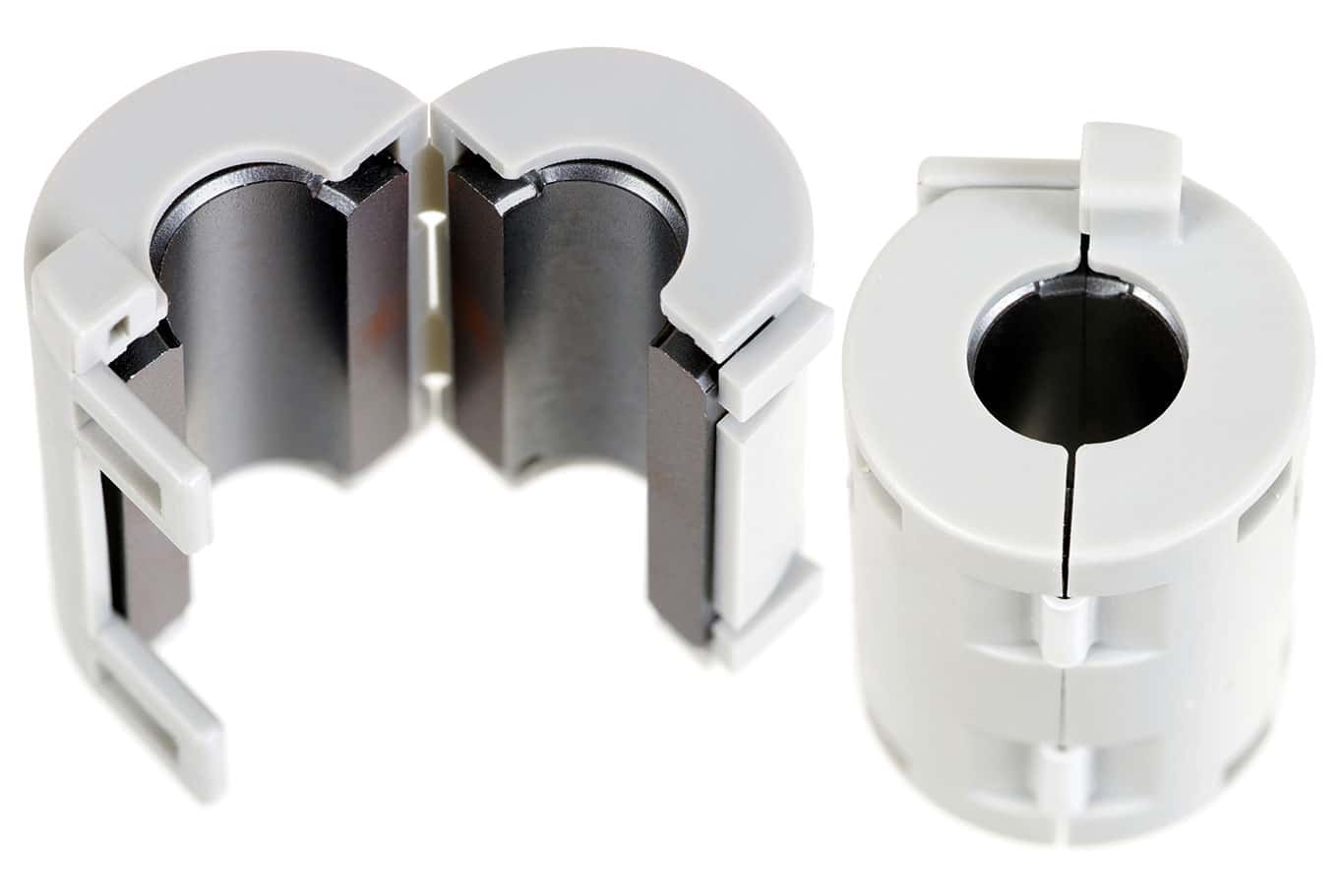Ferrite chokes and ferrite beads are essential components for managing interference and maintaining signal quality in electronic circuits. While both serve to block or attenuate unwanted frequencies, they have distinct uses and applications. In this guide, we’ll explore the differences between ferrite chokes and ferrite beads, helping you choose the right component for your electronic project.
What is a Ferrite Choke?
A ferrite choke is a type of inductor commonly used to filter out electromagnetic interference (EMI) and radio frequency interference (RFI) in circuits. Chokes, composed of ferrite material, can handle significant currents and are often found in devices that need to block high-frequency noise without interrupting desired low-frequency signals.
Key Characteristics of Ferrite Chokes
- Inductance: Ferrite chokes provide high inductance, making them suitable for blocking high-frequency noise.
- Current Capacity: Able to handle high currents, chokes are commonly used in power supplies and large electronics.
- Design: Usually toroidal or cylindrical, allowing for effective EMI filtering in confined spaces.
Learn more about ferrite chokes and how they function to find the right option for your setup.
What is a Ferrite Bead?
Ferrite beads are small components used primarily to suppress high-frequency noise in circuits. They are often used in high-speed digital applications to prevent unwanted signals from propagating through sensitive circuitry. Ferrite beads work by creating an impedance that effectively blocks high frequencies.
Key Characteristics of Ferrite Beads
- Compact Size: Ferrite beads are small and easy to integrate into compact circuits.
- High Impedance at High Frequencies: Ideal for attenuating high-frequency signals without affecting low frequencies.
- Low Current Applications: Unlike ferrite chokes, ferrite beads are designed for low to moderate current use.
Ferrite beads are widely used in consumer electronics and small devices, helping to prevent signal interference and maintain signal integrity.
Ferrite Choke vs. Ferrite Bead: A Comparison
Key Differences in Function and Application
- Primary Purpose:
- Choke: Blocks high-frequency interference in power circuits and high-current applications.
- Bead: Primarily suppresses high-frequency noise in small, sensitive circuits.
- Current Capacity:
- Choke: Handles high currents, suitable for power supplies and larger devices.
- Bead: Limited to low to moderate currents, ideal for small electronic circuits.
- Form Factor:
- Choke: Larger, often toroidal or cylindrical, designed for durability and heat resistance.
- Bead: Compact and suitable for integration on PCBs in high-density circuits.
- Typical Applications:
- Choke: Power electronics, motor control, and large devices needing EMI protection.
- Bead: Consumer electronics like smartphones, laptops, and digital interfaces.
Practical Applications of Ferrite Chokes and Ferrite Beads
Ferrite Choke Applications
Ferrite chokes are often used in applications that require strong noise suppression in high-current settings, such as:
- Power Supply Units (PSUs): Prevents high-frequency interference, protecting both the PSU and connected devices.
- Automotive Electronics: Blocks noise in car circuits, allowing seamless communication between electronic systems.
- Audio Equipment: Filters out high-frequency noise, ensuring high-quality audio output.
Ferrite Bead Applications
Ferrite beads are ideal for low-power, high-frequency applications, including:
- Digital Data Lines: Used on USB and HDMI cables to prevent EMI from disrupting data transmission.
- Computer Motherboards: Ensures clean power delivery to critical components, maintaining system stability.
- Handheld Devices: Found in mobile phones and tablets to prevent interference with wireless signals.
Explore our selection of ferrite components for your next electronic project.
Choosing the Right Component for Your Project
When selecting between ferrite chokes and ferrite beads, consider these factors:
- Current Requirements: The chokes are ideal for high-current applications, while ferrite beads suit lower currents.
- Frequency Needs: Ferrite beads are designed to handle high-frequency noise, making them optimal for digital data lines. The chokes work best in broader EMI suppression.
- Space Constraints: Ferrite beads are compact and better suited for circuit boards with limited space. Ferrite chokes, while larger, offer durable, long-lasting noise suppression.
By understanding these key differences, you can choose the component that best matches your project’s needs.
Ferrite chokes and ferrite beads are crucial for controlling electromagnetic interference, improving signal quality, and maintaining electronic device functionality. By selecting the right component based on current, frequency, and design requirements, you can achieve a cleaner, more efficient electronic setup. To find quality ferrite chokes and beads, explore EMTL’s range of wound components and enhance your circuit’s performance. Or contact us directly for more information at:
Phone: +44 1462 680689
Email: sales@emtl.co.uk
FAQs
Q1: Can ferrite chokes and ferrite beads be used together in the same circuit?
A1: Yes, chokes and beads can complement each other by addressing different interference types, offering enhanced EMI protection across a circuit.
Q2: Do ferrite chokes have any impact on low-frequency signals?
A2: They are designed to block high-frequency interference while allowing low-frequency signals to pass, making them effective in power circuits without disrupting signal flow.
Q3: How do I know which ferrite component I need?
A3: Assess your circuit’s current and frequency requirements. They are suitable for high-current, broad EMI applications, while ferrite beads are ideal for compact, high-frequency noise suppression in low-power settings.

